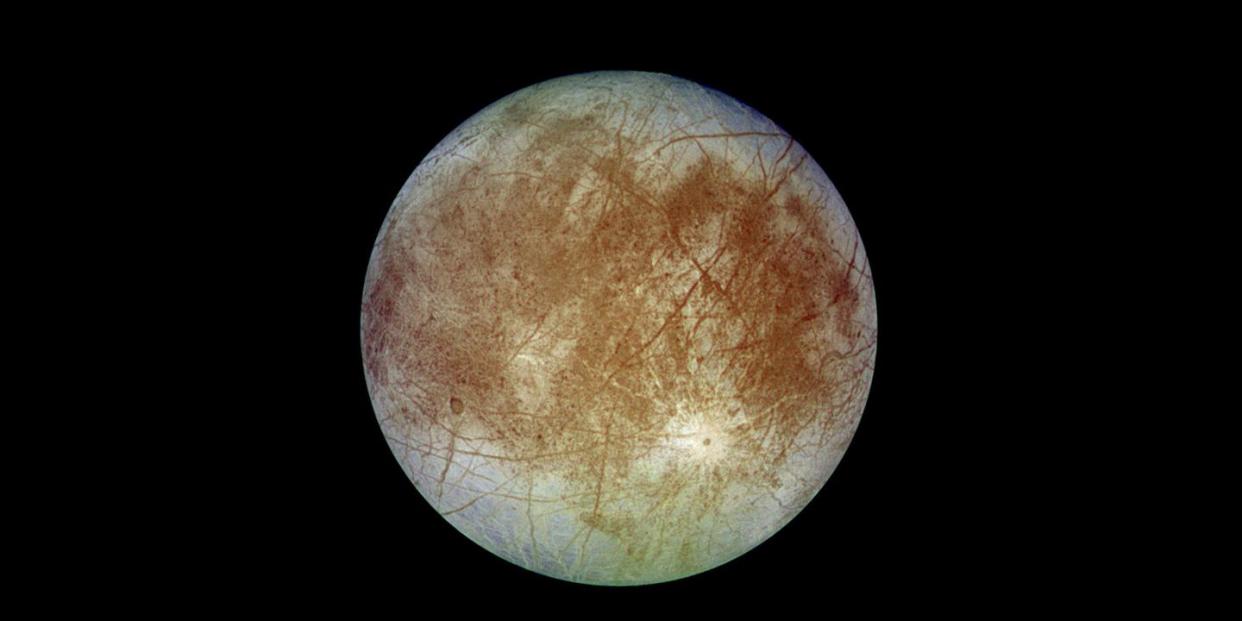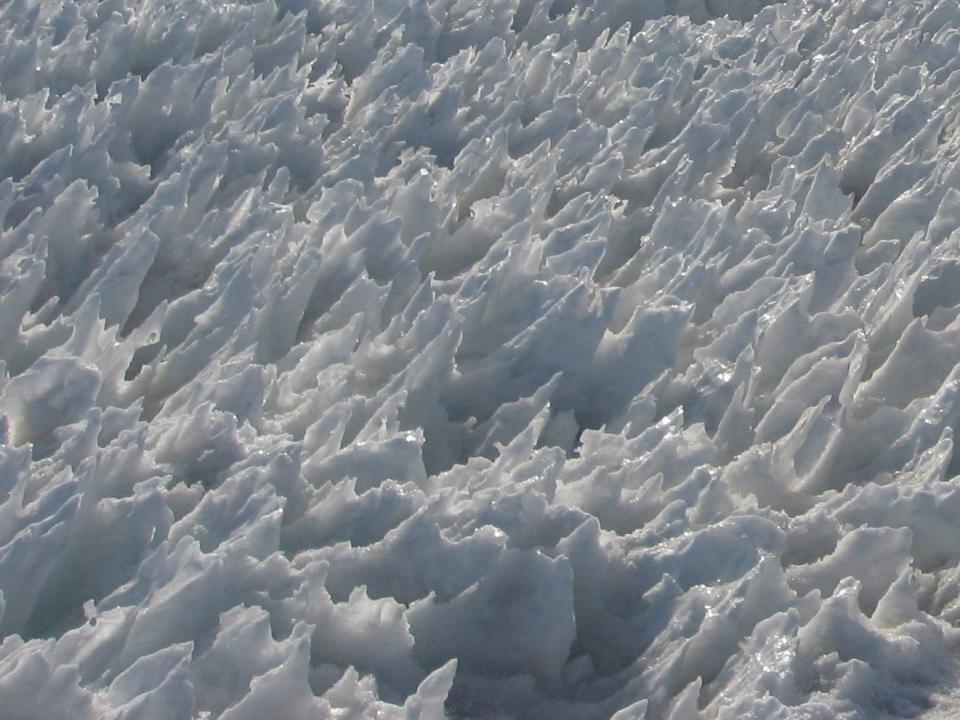Menacing Ice Spikes on Europa Could Endanger Future Landers

All eyes are on Europa right now, with a dedicated NASA mission headed there in 2022, and the European Space Agency launching a more general Jupiter moon probe that will have a couple encounters with Europa that same year.
But if these orbiters are the first step toward more widespread exploration of the ocean moon, they may reveal a giant complication. Like 50 foot spikes of ice jutting out from the crust of the moon.
A paper published today in Nature Geoscience outlines this problem. Daniel Hobley of Cardiff University and his team investigated how interactions with the ocean below might affect the ice shell surrounding the moon. Europa is of special interest because of this vast ocean which makes it one of the best places to find life beyond Earth given how life here started deep in the oceans.
Hobley and his team looked toward another place with a deep ice shell and liquid water below: Antarctica. Specifically, they looked at the formation of penitentes. These structures begin their formation below, jutting out areas of higher altitude into the ice shell.

In turn, sublimation-the process of turning a solid directly into a gas-leaves behind some more compacted areas, that appear as spikes of ice, some of them taller than a human and sharp as a blade. Because the surface of Europa is ever-changing, geologically speaking, Hobley thinks there may be different kinds of spikes at different latitudes. Some of them could even reach as tall as 50 feet high.
"The surface is patchy, and some areas are clearly younger than others from the way they overlap," he says. "So, although we say the average age of the surface is 50 million years and do our calculations with that number, the younger bits of the surface would have smaller spikes, and the older parts, bigger."
But here's the bad news: They predict some of the largest spikes would exist at the equator. For several reasons, this is seen as the most ideal landing spot, as changing orbital inclination can be fuel intensive. (It's easier to get a spacecraft in a relatively straight line going across the equator than it is to get it in an orbit that's a few dozen degrees above or below that.) There could, depending on power source, also be problems with the amount of radiation a lander receives at varying latitudes.
"I guess some creative engineer could also come up with a design for a lander that would be able to land among spikes," Hobley says. "The important thing is knowing they’re there ahead of time, so NASA can plan around it."
There are some caveats here. Europa is under-explored. Hubble isn't able to make observations of structures that small with its resolution, and the last craft to explore Jupiter's moons-the Galileo craft, which took several swoops through the system from 1995 to 2003-failed to deploy the antenna that could have sent back more high resolution data. It also never got close enough to get any imaging from the low gain antenna that slowly sent back pictures taken by the mission.
This means that there isn't proof positive these structures are there. Instead, it's simply likely, based on modeling. There's thermal data from Galileo which shows heating consistent with formation of the ice spikes, and radar data hints at a jagged equatorial surface. It will take the Clipper mission to truly confirm them, with the potential problem that some versions of the mission call for a small lander.
"The most obvious thing to do would simply land away from the equator, where all the penitentes are," Hobley says. But that could require a bit more work. Maybe, in the end, we'll find a smoother patch of ground to land on there once we have enough Clipper data-but maybe we should hold off on sending a lander there immediately, lest it simply impales itself on the way down.
('You Might Also Like',)

